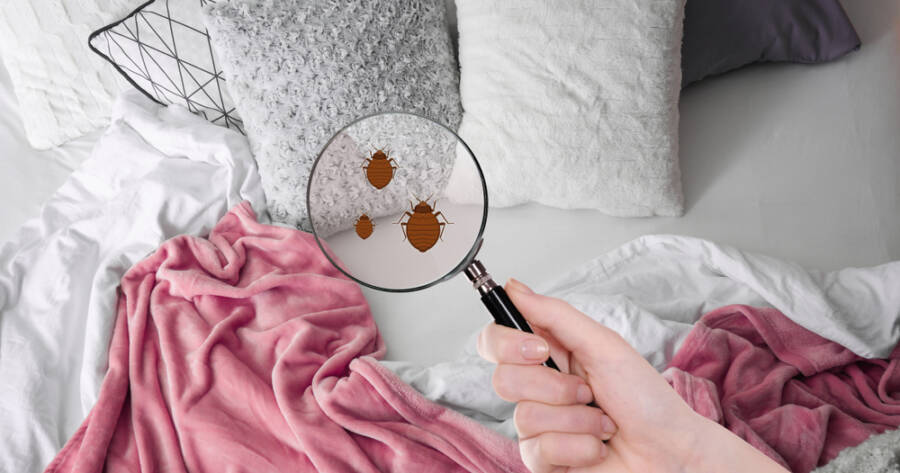These tiny, elusive pests can cause discomfort and stress, making it essential to understand and identify them correctly. Fortunately, you can learn everything you need to know about bedbugs by doing your homework now!
What Are Bed Bugs?
Bed bugs are small, oval, brownish insects that feed on the blood of animals or humans. Adult bed bugs have flat bodies about the size of an apple seed, but they swell and become reddish after feeding.1 They don’t fly, but they can move quickly over floors, walls, and ceilings.
Female bed bugs may lay hundreds of eggs, each the size of a speck of dust, over a lifetime. These insects are known for their stealthy behavior, hiding in mattresses, bed frames, and headboards, emerging at night to feed on their unsuspecting hosts.
How Do Bedbugs Spread?
Bed bugs are master hitchhikers, spreading from place to place on luggage, clothing, bedding, and furniture. They are not a sign of uncleanliness. They can thrive in immaculate homes and hotel rooms.
These pests can easily cling onto and travel with personal belongings, making public spaces like hotels, hospitals, and public transport hotspots for picking up these unwanted guests. Understanding their spread is crucial in preventing a full-blown infestation and requires regular inspection of your living space.
When to Call the Professionals
While DIY methods exist, controlling a bed bug infestation often requires professional intervention.2 It’s time to call pest control professionals when you notice signs of bed bugs, like blood stains on your sheets, bed bug excrement, or an unexplained musty odor in your bedroom.
Professionals have the expertise and tools to assess the extent of an infestation and recommend the best course of action. It might include chemical treatments or heat treatments, which are more effective and less disruptive than traditional methods.
Signs of Bed Bug Infestations
Identifying a bed bug infestation early can prevent a minor problem from becoming a major headache. Key signs include finding bed bug shells, pale yellow skins that bed bugs shed as they grow, and rusty or reddish stains on bed linens and mattresses caused by crushed bed bugs. Another indicator is small dark spots, which are bed bug excrement. Understanding these signs is crucial for early detection. Various resources provide detailed images and descriptions to help distinguish bed bugs from other pests, aiding in timely intervention.
Preventative Measures
Preventing a bed bug infestation involves proactive measures such as regularly inspecting sleeping areas, especially after traveling. Encase mattresses and box springs in protective covers to eliminate hiding spots. Reduce clutter around sleeping areas to minimize potential hiding places. Washing and drying bed linens on high heat can also kill bed bugs and their eggs. Using bed bug interceptors on bed legs can prevent bed bugs from climbing onto the bed. Various guides offer comprehensive steps for prevention, including videos and expert tips to keep your home bed bug-free.
Control Bed Bugs Today
Understanding and combating bed bugs can seem daunting, but with the right information and resources, it’s a battle that can be won. The internet offers insights into identifying, preventing, and eradicating bed bug infestations.
Whether it’s distinguishing bed bugs from other pests, exploring DIY prevention tips, or finding the best professionals near you, get started today and stay one step ahead of these pesky pests.
